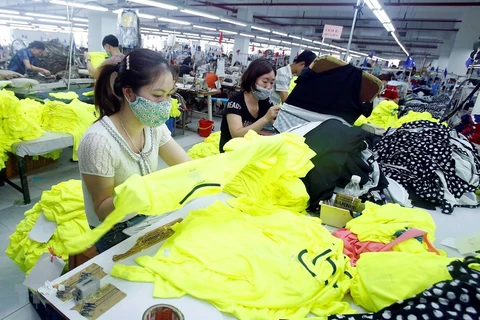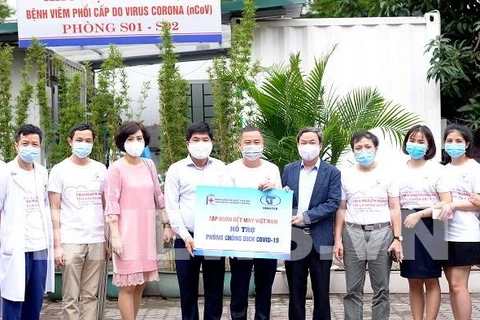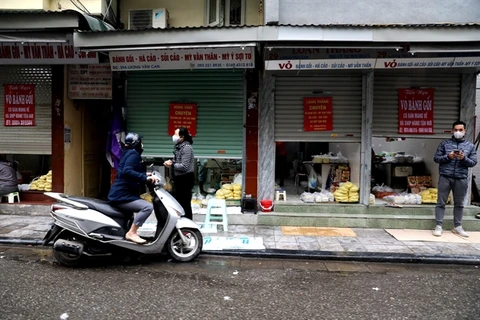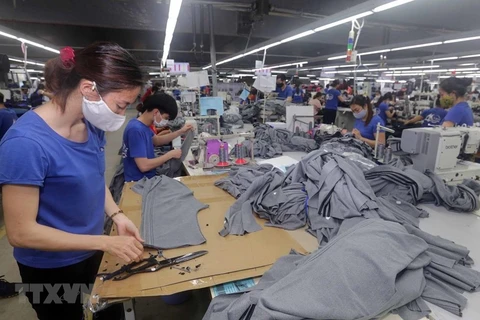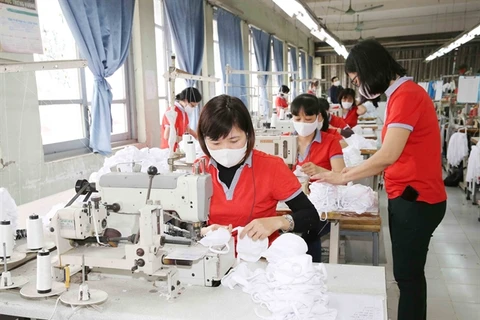Hanoi (VNA) - The COVID-19 pandemic has left Vietnam’s textile and garment sector in deep trouble because of rising order cancellations and delays, but some producers have found a way around and been able to weather the storm.
The pandemic has been a blow for domestic garment makers who had already been struggling to source materials elsewhere outside of China after Vietnam’s northern neighbour went into lockdown in late January.
And now, just as things are beginning to return to normal in China, bigger problems have emerged as the disease has spread globally, hitting orders from key markets for Vietnam such as the US and Europe.
The latest data revealed some unpleasant truths for the sector. It saw exports slide 9.07 percent year-on-year in the first quarter and imports, 16.59 percent.
US and European buyers have suspended or cancelled orders since mid-March, according to the Vietnam National Textile and Garment Group (Vinatex), one of the country’s biggest apparel makers.
Falling exports slashed its Q1 revenue by 7 percent year-on-year.
Demand has plunged in the US and Europe, where travel restrictions and social distancing orders have been put in place to stem the spread of the pandemic. Retail outlets are unlikely to reopen until early May at best, causing extended delays to existing orders while few new orders have been placed, Vinatex’s Managing Director Cao Huu Hieu said.
Most orders put on hold are for Spring and Summer clothing lines, he went on, while the pandemic is expected to be brought under control by Autumn at the earliest, making it highly likely these lines will be cancelled anyway.
The Vietnam Textile and Apparel Association (VITAS) has forecast that Vietnam’s textile and garment exports may shrink 15 percent to 33 billion USD in 2020. Globally, orders are predicted to fall 29 percent over the course of the year.
Despite its many and varied negative impacts, the pandemic is also presenting opportunities as local producers benefit from rising demand for medical masks both at home and abroad. Export orders are in the millions of USD, with the Garment 10 Corporation JSC being an example of an enterprise doing well in the current environment.
It has received an order for 400 million medical masks worth 52 million USD, together with orders for 20 million cloth masks from a US partner and 2 million cloth masks and 6 million medical masks from a German partner.
Capable of producing 90-100 million masks a month, Vinatex has been processing orders from the Czech Republic, Hungary, Canada, and the US for anti-droplet and anti-bacterial three-layer masks.
Shifting from garments to masks allows the company to keep production going and pay its workers, Hieu said.
He added that in order to export masks to the US and the EU, producers must obtain FDA and CE certification, respectively, which indicate that a product meets their safety, health, and environmental protection requirements.
This can generate extra costs and take time to obtain, he warned./.
VNA

